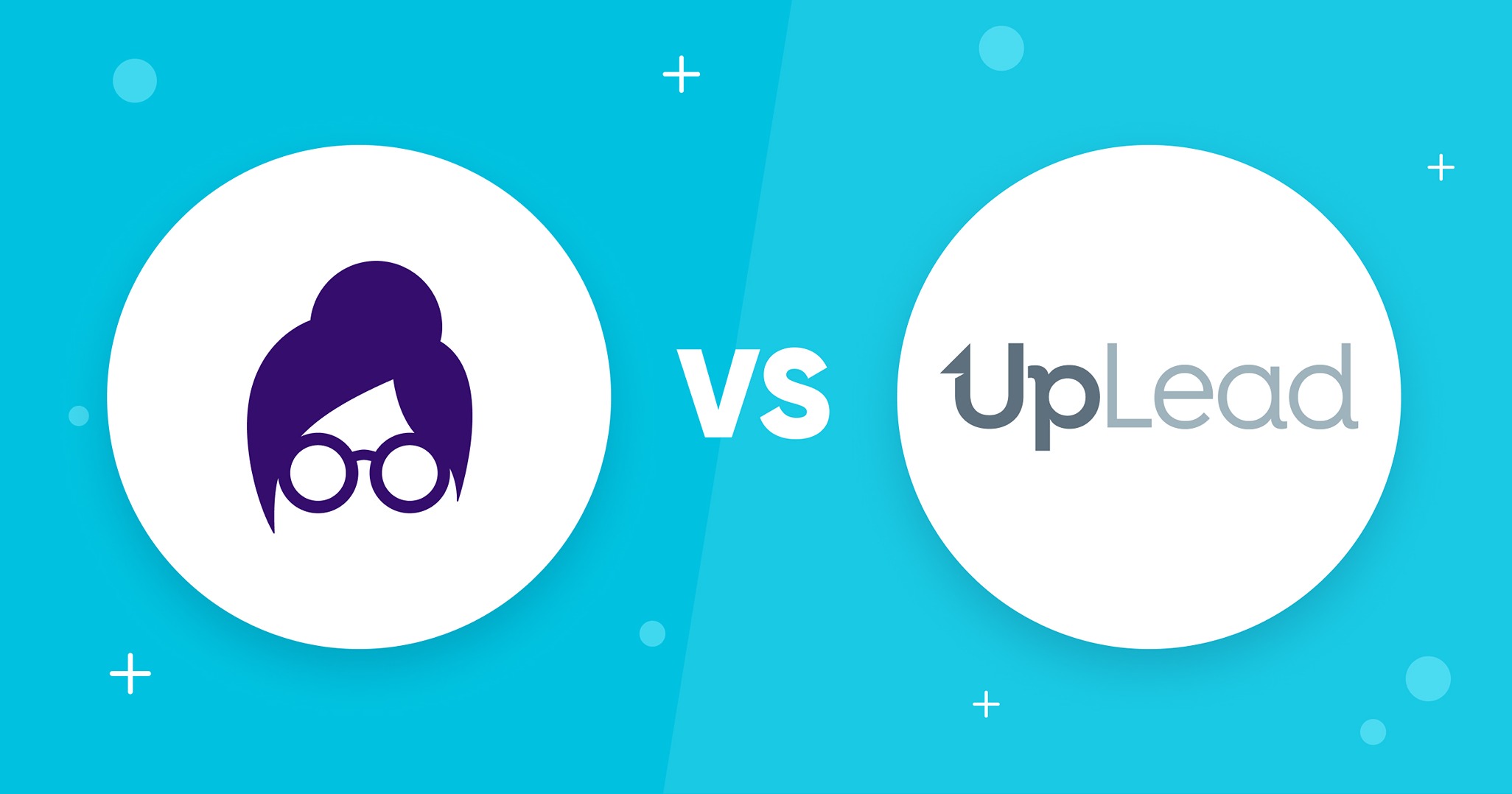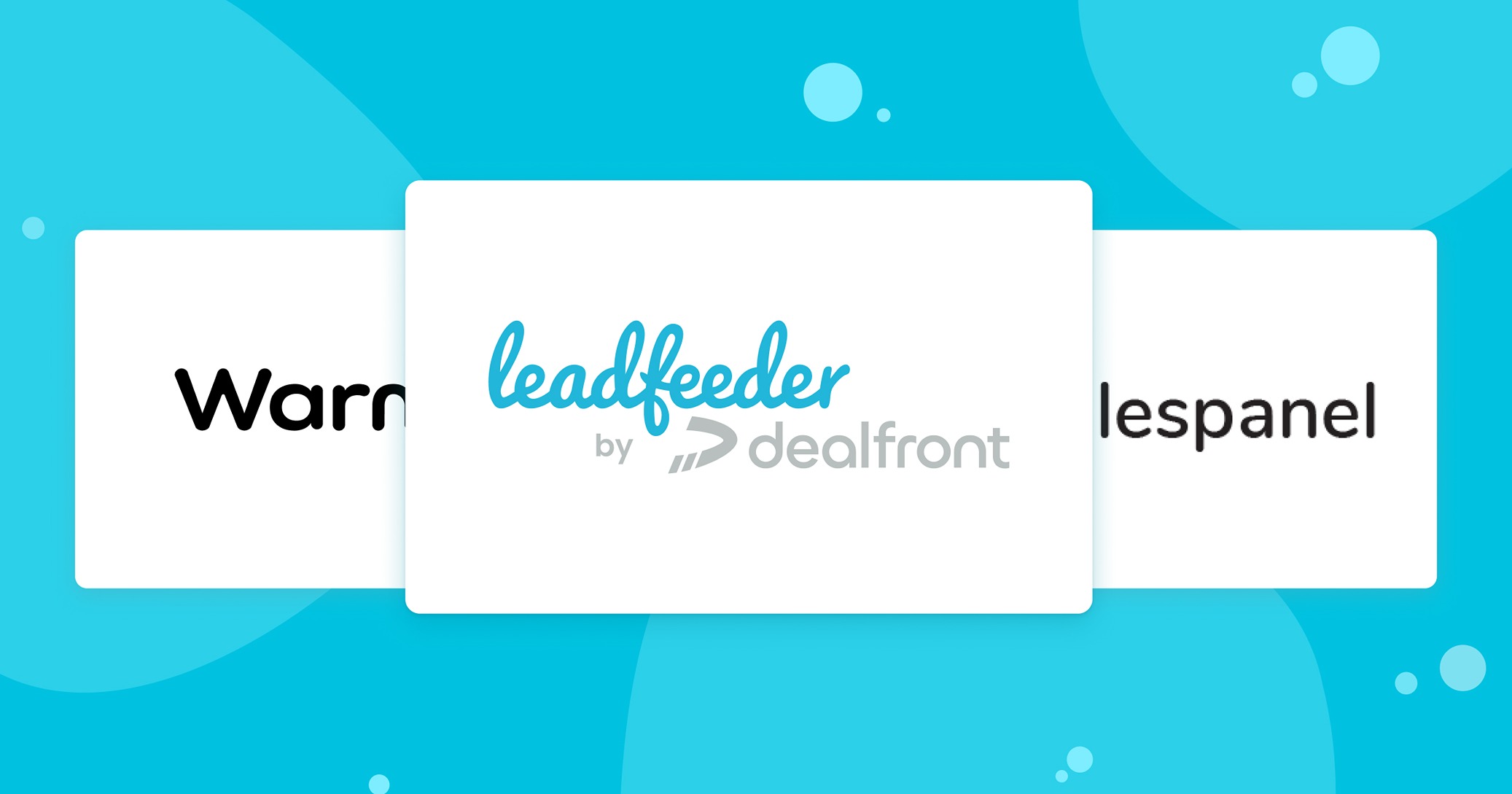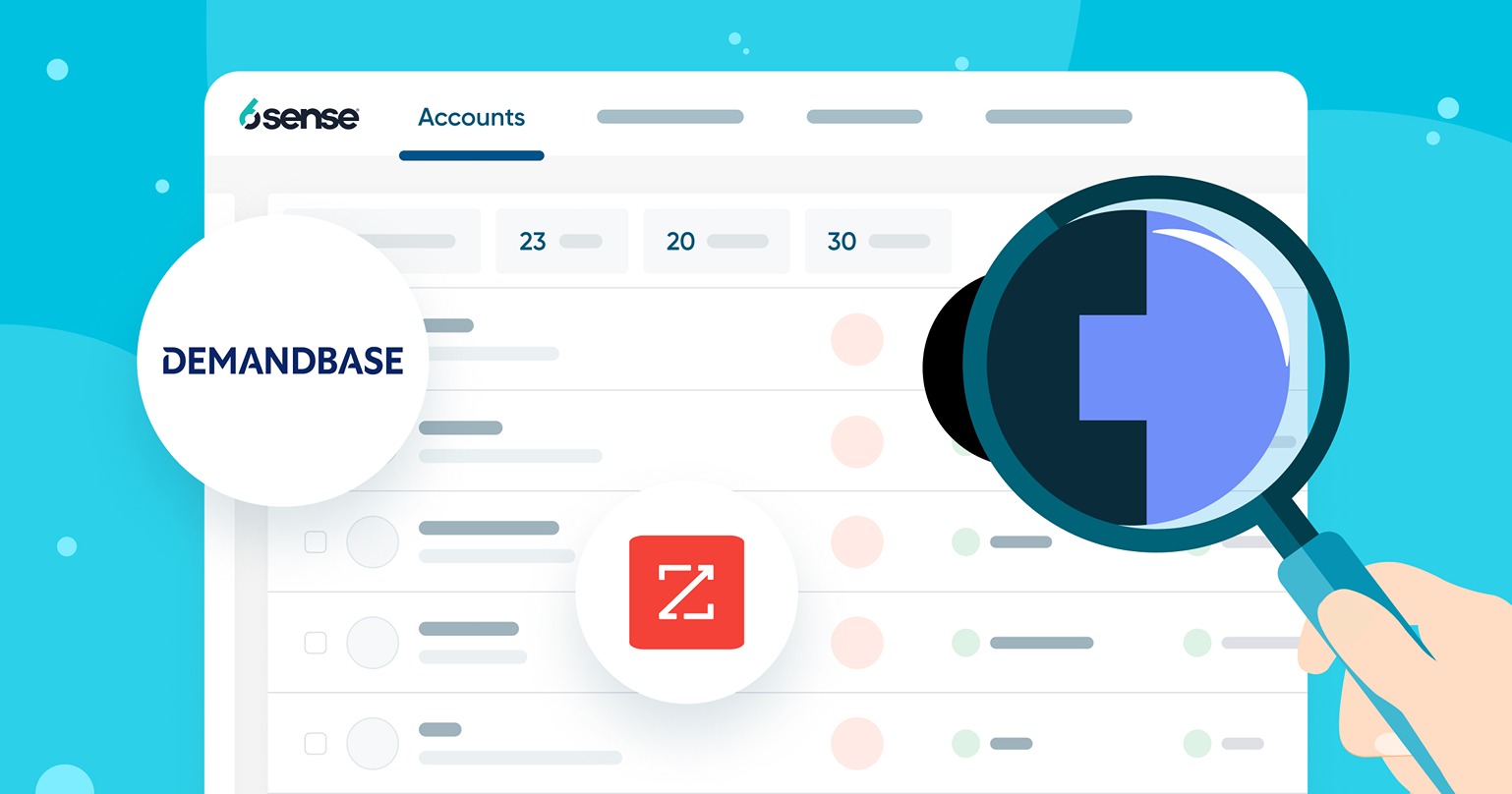Account-based marketing (ABM) and demand generation take divergent approaches to fueling B2B growth. This guide unpacks the key differences – from target audience and objectives to tactics and success metrics.
Account-based marketing brings surgical focus to a hand-picked list of must-win accounts with hyper-customized campaigns. Demand generation casts a wider net, running broad awareness campaigns across segments to capture net new leads.
So, which model wins out? The reality is both play vital roles in balanced revenue engines. While philosophies and ideal users differ, ABM and demand gen ultimately work hand-in-hand – attacking growth from both angles. Read on to determine the best targeted strategy for your tech stack and for demand gen and account-based marketing examples in action.
📌 Whether you choose ABM, demand gen, or a combination of both, you can use UpLead to identify leads with laser precision. Try UpLead and get 5 free validated B2B emails first!
What Is Account-Based Marketing?
Account-based marketing, or ABM, takes a targeted approach to B2B marketing and sales teams. Rather than marketing to a broad audience, Account-based marketing focuses efforts on a select group of key, high-value accounts. These accounts are treated as “markets of one.” The goal is to align sales and marketing teams to customize campaigns and content for those vital target accounts. ABM typically aims for more extensive, enterprise-level deals. Success depends on thorough research to deeply understand each account’s specific sales and marketing goals and pain points. Then, marketing and sales can personalize messaging to address their unique needs and preferences. When executed well, this tailored lead-generation strategy makes a big impact on key accounts.
What Is Demand Generation?
Demand generation adopts a broad marketing strategy to fuel business growth. Rather than just pitching products out of the blue, it attracts potential buyers by solving their pain points. The approach nurtures relationships over time through useful education and outreach across multiple touchpoints. Demand gen guides prospects through their entire journey from initial awareness to post-purchase support. Demand generation tactics may span content, events, SEO, social, and more. The goals? Generate quality leads, nurture opportunities, and build a pipeline. Tight collaboration between marketing and sales accelerates momentum. Executed effectively, demand generation resonates by crafting targeted messages and experiences. The result is a flywheel spinning faster and faster.
How Do ABM and Demand Generation Differ?
Account-based marketing and demand generation take very different approaches to B2B marketing. ABM focuses laser-like on a select group of high-value target accounts, customizing campaigns just for them. Demand generation uses a broader brush to drive general brand awareness and leads across wider market segments.
As you might expect, these divergent strategies lead to major differences.
Target Audience
ABM and demand generation define their targets very differently. Let’s compare. Account-based marketing precisely selects 1-15 or hundreds of high-value existing accounts to focus on (depending on the company size). So, out of thousands of potential customers, they narrow it down to less than 1%. Demand generation takes the opposite approach – marketing broadly to entire segments across a market instead of individual companies.
To put some numbers on it, more than 70% of B2B organizations have ABM programs. At the same time, over 76% of marketers say they experienced a higher ROI with ABM compared to other marketing strategies.
The sharply contrasting approaches highlight core differences. ABM concentrates resources on best-fit accounts, while demand gen casts a wide net, hoping to capture volume.
Approach
Their strategy also differs tremendously in terms of personalization and breadth. Today, more than 71% of customers expect personalized interactions, and 76% of those customers will actively express disappointment with a lack of personalization. Account-based marketing intricately tailors campaigns for specific named accounts. Demand generation instead runs broader one-size-fits-all campaigns aimed to appeal to many. Case in point – 70% of marketers would rate their leads as high quality.
The contrast shows how ABM delivers highly tailored outreach while demand gen uses broad targeting, hoping to resonate. Ultimately, ABM drives greater engagement through relevance while demand gen opts for volume through generic campaigns.
Sales and Marketing Alignment
Collaboration between sales and marketing varies quite a bit, too. Tight alignment is mandatory for ABM since both sales and marketing teams must intimately understand target accounts to coordinate effective one-to-one outreach. Companies that connect these functions can increase company revenue by up to three times. On the other hand, demand generation often sticks to the traditional model – marketing produces broad awareness and passes off leads with little additional context.
Ultimately, ABM necessitates a shared understanding of account needs and coordinated outreach between functions. Demand gen lacks that interlock, passing anonymous leads in lieu of strategic sales alignment.
Metrics to Track
The key performance indicators used to gauge success also differ quite a bit between the strategies. Account-based marketing cares about a small number of vital accounts, so it tracks engagement within those targets and how much revenue they generate. For example, 75% of ABM adopters cite the strategy as allowing them to engage with the right buyers early in the sales process. Demand generation casts a wider net, so they watch macro metrics like total lead volume, cost per lead, and conversion rates through their pipeline. On average, B2B companies pay about $198 per lead, which adds up fast at high volumes.
ABM focuses on account engagement and pipeline from strategic accounts, while demand gen tracks lead volume and cost efficiency at scale. The demand generation metrics match those tracking a broader audience and creating awareness.
Objectives
Their goals differ, too. The whole purpose of account-based marketing is driving customer revenue growth from a handful of named existing accounts. In fact, ABM increases sales-accepted qualified leads by 25%. Demand generation instead wants to build brand familiarity broadly and collect as many new leads as possible to feed the sales engine. For example, 68% of B2B marketers focus on landing pages, email, and other tactics to capture net-new names and nurture them into opportunities, citing a conversion rate of less than 10%.
Content and Messaging
Content created for each strategy varies considerably as well. ABM dictates tailoring messages and assets specifically to resonate with individual accounts. 92% of B2B marketers consider highly customized content essential for ABM’s success. Demand generation takes a more blanket approach to content by speaking to broad industry trends and themes. The average B2B buyer actually consumes between 3 to 5 pieces of educational content before engaging with sales, suggesting brand-led thought leadership has plenty of appeal.
Tools to Use
The technology approach differs quite a bit, too. Account-based marketing and intent data platforms help identify specific high-value accounts and buying signals. In fact, global ABM spending is expected to reach over $1.6 billion by 2027. Demand generation instead leans on expansive CRM and marketing automation systems designed to handle large volumes of data and outreach. Two-thirds of successful B2B marketers adopt marketing automation to nourish broad lead follow-up.
Essentially, ABM requires identifying target accounts while demand gen necessitates managing extensive lead data. Each marketing teams’ tech stacks align with their strategy and focus.
Scalability
Lastly, scalability varies enormously. Account-based marketing is incredibly labor-intensive to craft customized campaigns for a select group of accounts, so it’s nearly impossible to scale. Most organizations (49%) will manage between 15-100 target accounts per quarter. Compare that to demand generation focused on automation and volume, where 80% of marketers easily scale lead gen efforts through technology with marginal added effort.
What Should You Choose: ABM or Demand Gen?
The best approach – ABM or demand generation marketing – depends on your specific business goals, target market, and resources. Each strategy has strengths in different scenarios.
Choose ABM when:
- You have a small, well-defined target account list
- Your product requires a major investment from customers
- Your industry has few major players (e.g., Aerospace)
- You can fund highly personalized marketing
- Your sales cycle length tends to be extensive and complex
The proof? Companies running successful account-based marketing strategies see a 90% or higher engagement rate with their targeted accounts. This demonstrates how ABM can focus efforts around vital target organizations.
Choose demand generation when:
- You’re targeting a broader segment
- Your product has varied use cases and technographic makeup
- You have a smaller marketing budget
- Volume lead generation is the goal
- You aim to increase overall brand awareness
Case in point: 53% of marketing teams devote over half their budgets trying to produce as many raw leads as possible.
Many find a blended model works best, combining ABM for key accounts and demand generation strategies for the general market.
How to Get Started With Account-Based Marketing and Demand Generation?
Both ABM and demand generation can drive success but take different approaches from the start. Here’s how to launch each strategy, along with proven tactics.
3 Tactics for Account-Based Marketing
Here are 3 tactics you can use to get started with Account-Based Marketing:
Identify and prioritize target accounts.
- Conduct in-depth research to understand target accounts, identify key contacts, and determine where they are in the buyer’s journey.
- Subsequently, leverage analytics and potential customers’ data to select high-value accounts fitting your ideal customer profile that have the most sales potential.Leverage analytics to select high-value accounts fitting your customer profile
- Collaborate cross-functionally with sales to align priorities by deal size, projected revenue growth, and conversion potential. Specifically, develop consensus between marketing and sales on the highest value accounts to focus ABM efforts for the biggest impact jointly.
- 19% of companies using ABM have reported more than 30% revenue growth
Create personalized content
- Create tailored content addressing the specific pain points, challenges, and goals of each target account. In particular, an effective sales team can develop account-specific case studies, whitepapers, and presentations that speak directly to their needs in order to drive engagement.
- 56% say customized content is essential for ABM
Implement multi-channel engagement
- Use targeted ads, personalized direct outreach, and physical direct mail campaigns to reach different stakeholders. Additionally, engage them through social media and invite them to customized events crafted specifically for their interests.
- With a multi-channel strategy, over 50% of companies have reported almost always hitting their financial targets
3 Tactics for Demand Generation
Here are 3 tactics you can use to get started with demand gen:
Develop robust content marketing
- Create educational, informative content addressing target audience needs across the entire buyer’s journey in order to attract and engage prospects initially. Specifically, leverage blogs, ebooks, on-demand webinars, and videos (for example personal or animated videos) throughout the process.
- 70% of B2B buyers consume 3-5 assets before sales talks
Leverage marketing automation
- Nurture leads and prospects by first mapping out buyer journeys and subsequently setting up automated demand gen campaigns to guide them from awareness through consideration. Moreover, score incoming potential customers to identify sales-ready leads based on attributes indicative of high buying potential.
- 80% of demand-gen sales and marketing teams gain more leads through automation
Optimize for search and paid ads
- Improve SEO visibility with technical and content-focused best practices to increase organic traffic. Additionally, run highly targeted PPC campaigns across channels such as Google and LinkedIn to reach aligned potential buyers with campaign messages focused on their key needs and interests.
- Organic and paid search make up 80% of trackable website visits
Implementing these proven tactics for both strategies will generate more pipeline and higher conversion.
How Can UpLead Help With ABM and Demand Generation?
UpLead arms B2B marketers with data-driven solutions to power both targeted ABM and broad demand generation programs:
For ABM, UpLead identifies high-value accounts using 50+ filters and provides enriched profiles with technologies used, contact details of key decision-makers, and more. This fuels precise outreach.
Tap into UpLead’s database of over 160 million business contacts for demand generation. Build targeted lists, verify emails in real-time, and integrate with CRMs to drive scalable lead management.
Whether you need accurate data to create tailored plans for strategic accounts or quality leads to drive broad awareness and pipeline, UpLead’s 95% accurate B2B database guarantees the credible information to set ABM, demand generation, and overall marketing efforts up for success.
📌 Try UpLead and get 5 free validated B2B emails first!
FAQ
Here are some of the most frequently asked questions about ABM vs demand generation.
Yes, small companies can still benefit from an ABM approach. Start by identifying and focusing marketing efforts on your most valued target accounts, even if limited in number. This focused strategy can drive better returns than broader efforts.
Definitely. Tailoring content to the specific needs of niche markets tends to resonate better with those target audiences than generic messaging. Leaning into that specialty can unlock demand.
Not always. While money can be a barrier for some, you can kick off ABM with a limited pilot program first. Then, scale it up gradually as you see positive returns from the initial seed effort.
No. Omnichannel strategies that combine digital tactics like email with traditional direct mail and phone outreach are the most effective. The key is orchestrating a nurturing sequence using different formats to repeatedly engage key targets.









